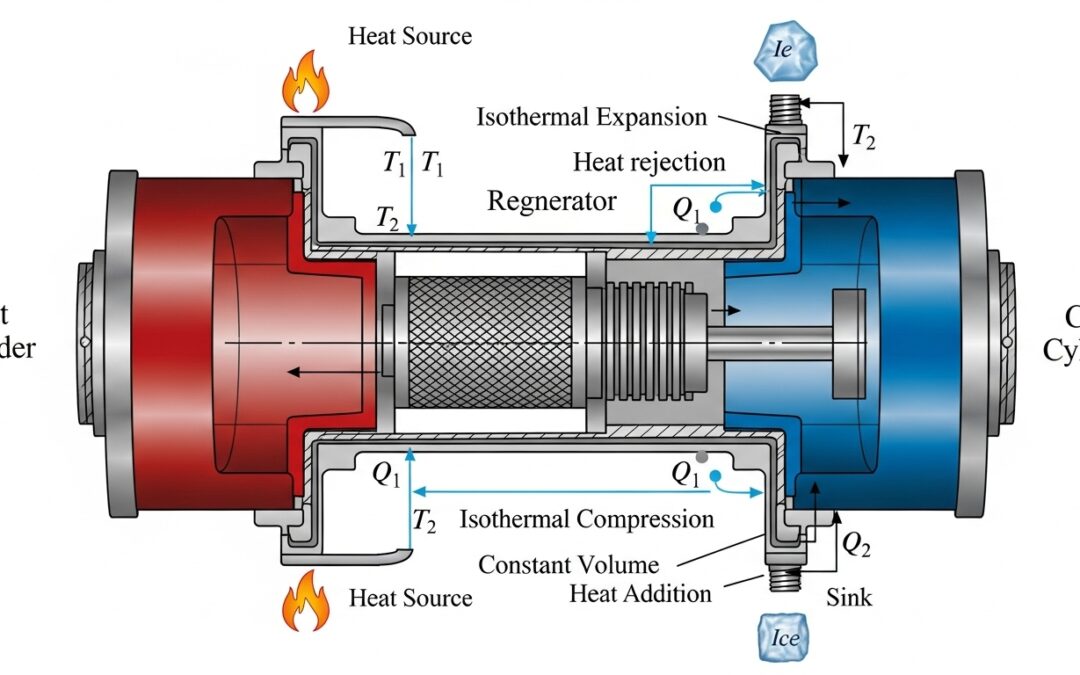With IIT JEE magnetic force problems, you’re stepping into a captivating realm where physics and mathematics intertwine. These problems are not just about equations; they represent real-world phenomena that drive technological advancements. This guide will provide a comprehensive overview of how magnetic fields affect current-carrying wires and charged particles.
Table of Contents
Read More
Welcome, future engineers! Are you ready to sharpen your skills in magnetism? This post is meticulously designed to help you tackle challenging problems related to IIT JEE magnetic force, focusing on the force experienced by current-carrying conductors in magnetic fields. We will dissect numerical problems, offering step-by-step solutions and insightful explanations. Let’s dive in and unravel the mysteries of magnetic forces!
Unveiling the Secrets of IIT JEE Magnetic Force
Understanding the fundamentals of IIT JEE magnetic force is crucial for success. The interaction between moving charges and magnetic fields is at the heart of electromagnetism. This section will lay down the basic concepts required to understand and solve numerical problems related to force on a current-carrying wire placed in a magnetic field. Furthermore, we will discuss the factors that affect the magnitude and direction of the force.
The Lorentz Force and Its Implications
The foundation of understanding magnetic forces lies in the Lorentz force law. This law describes the force experienced by a charged particle moving in a magnetic field. For a single charge, the force is given by ##F = q(v × B)##, where ‘q’ is the charge, ‘v’ is the velocity of the charge, and ‘B’ is the magnetic field. This cross product reveals that the force is perpendicular to both the velocity and the magnetic field, which is why charged particles experience a circular or helical motion in a uniform magnetic field. The force’s magnitude is proportional to the charge’s magnitude, the speed of the charge, and the strength of the magnetic field.
When considering a current-carrying wire, the force on each moving charge sums up to create a net force on the wire. The current is defined as the rate of flow of charge, and the direction of the current is the direction of the positive charge flow. The force on a wire segment of length ‘L’ carrying current ‘I’ in a magnetic field ‘B’ is given by ##F = I(L × B)##. This equation indicates that the force is perpendicular to both the current direction and the magnetic field direction. This fundamental principle is essential for solving many problems in electromagnetism, including those encountered in the IIT JEE examination.
Delving into the Force on a Current-Carrying Wire
The force on a current-carrying wire in a magnetic field is a cornerstone concept in electromagnetism. This phenomenon is the basis for many practical applications, such as electric motors and magnetic levitation systems. The direction of the force is determined by the right-hand rule. If you point your fingers in the direction of the current and curl them towards the direction of the magnetic field, your thumb points in the direction of the force. This rule allows us to quickly determine the direction of the force acting on the wire.
The magnitude of the force depends on several factors, including the current flowing through the wire, the length of the wire segment within the magnetic field, and the strength of the magnetic field itself. The angle between the current direction and the magnetic field also plays a crucial role. When the current is perpendicular to the magnetic field, the force is at its maximum value. If the current is parallel to the magnetic field, the force is zero. This relationship is mathematically expressed as ##F = BILsinθ##, where θ is the angle between the current and the magnetic field. This equation is a key tool for solving numerical problems related to IIT JEE magnetic force.
Tackling Numerical Problems on IIT JEE Magnetic Force
Solving numerical problems is key to mastering the concepts of IIT JEE magnetic force. This section will demonstrate how to apply the principles discussed earlier to solve specific problems. We will start with a basic example and then move on to more complex scenarios. Understanding the step-by-step approach is crucial, as it allows you to break down complex problems into manageable parts.
Problem 1: Force on a Wire
Let’s consider a 1-meter wire carrying a current of 5 Amperes, placed perpendicular to a magnetic field of 0.2 Tesla. The goal is to calculate the force on the wire. The formula to use here is ##F = BIL##. We know that the current (I) is 5 A, the length of the wire (L) is 1 m, and the magnetic field (B) is 0.2 T. Because the wire is perpendicular to the magnetic field, sinθ = sin(90°) = 1. By substituting the values, we get ##F = 5 A × 1 m × 0.2 T = 1 N##. Therefore, the force acting on the wire is 1 Newton.
This calculation illustrates a direct application of the formula. The force is a vector quantity, and its direction is determined by the right-hand rule. In this case, the force is perpendicular to both the direction of the current and the magnetic field. This problem demonstrates the basic principles of how a magnetic field exerts a force on a current-carrying wire. Mastering this type of calculation is essential for solving more complex problems involving magnetic forces.
Problem 2: Force on a Wire at an Angle
Consider a wire of length 2 meters carrying a current of 4 Amperes. The wire is placed in a magnetic field of 0.5 Tesla at an angle of 30 degrees. Determine the force acting on the wire. We know that ##F = BILsinθ##. The current (I) is 4 A, the length (L) is 2 m, the magnetic field (B) is 0.5 T, and the angle (θ) is 30 degrees. Therefore, ##F = 4 A × 2 m × 0.5 T × sin(30°)##. Since ##sin(30°) = 0.5##, ##F = 4 A × 2 m × 0.5 T × 0.5 = 2 N##. The force acting on the wire is 2 Newtons.
This problem introduces the concept of an angle between the current and the magnetic field. The force is at its maximum when the wire is perpendicular to the magnetic field and zero when the wire is parallel to it. The sine function accounts for the angle, and the force’s magnitude is reduced as the angle deviates from 90 degrees. The right-hand rule still applies to determine the direction of the force, which will be perpendicular to both the wire and the magnetic field direction. Understanding the effect of the angle is crucial for solving more advanced problems.
Key Takeaways
Mastering IIT JEE magnetic force problems involves understanding the interaction between moving charges and magnetic fields, particularly the Lorentz force and its implications. The direction of the force is determined by the right-hand rule, and the magnitude depends on the current, length, magnetic field strength, and the angle between them. By consistently applying these concepts, you will be well-equipped to solve complex problems related to electromagnetism.
Similar Problems (Quick Solutions)
Magnetic Force on a Current-Carrying Conductor: Practice Problems
| When a wire carrying an electric current is placed in a magnetic field, it experiences a force. This force is given by the formula: Formula ###F = BIL \sin \theta### ##F## = magnetic force (N) ##B## = magnetic field strength (T) ##I## = current in the conductor (A) ##L## = length of the conductor in the magnetic field (m) ##\theta## = angle between current and magnetic field |
Problem 1
Question: A wire of 3 m length carries a current of 2 A perpendicular to a magnetic field of 0.4 T. Find the force.
Solution:
Since the wire is perpendicular, ##\theta = 90^\circ \Rightarrow \sin\theta = 1##
###F = BIL = 0.4 \times 2 \times 3 = 2.4 \, \text{N}###
Answer: 2.4 N ✅
Problem 2
Question: A 0.5 m wire experiences a force of 0.5 N in a 0.2 T magnetic field. What is the current?
Solution:
Formula: ###I = \frac{F}{BL} = \frac{0.5}{0.2 \times 0.5} = \frac{0.5}{0.1} = 5 \, \text{A}###
Answer: 5 A ✅
Problem 3
Question: A wire carries 10 A at 45° to a 0.3 T field. If the force is 1.5 N, what is the wire length?
Solution:
Formula: ###L = \frac{F}{BI\sin\theta} = \frac{1.5}{0.3 \times 10 \times \sin 45^\circ}###
Since ##\sin 45^\circ = \frac{\sqrt{2}}{2} \approx 0.707##
###L = \frac{1.5}{0.3 \times 10 \times 0.707} = \frac{1.5}{2.121} \approx 1.13 \, \text{m}###
Answer: 1.13 m ✅
Problem 4
Question: A 2 m wire with 4 A current experiences a force of 0 N. What is the angle?
Solution:
If force is zero, then ##\sin\theta = 0 \Rightarrow \theta = 0^\circ \text{ or } 180^\circ##
Answer: 0° or 180° ✅
Problem 5
Question: A wire of 1.5 m in a 0.8 T field experiences a force of 1.2 N. What is the current?
Solution:
Since perpendicular, ##\sin \theta = 1##
###I = \frac{F}{BL} = \frac{1.2}{0.8 \times 1.5} = \frac{1.2}{1.2} = 1 \, \text{A}###
Answer: 1 A ✅
Summary Table
| Problem | Given Values | Unknown | Answer |
|---|---|---|---|
| 1 | L = 3 m, I = 2 A, B = 0.4 T, θ = 90° | F | 2.4 N |
| 2 | L = 0.5 m, F = 0.5 N, B = 0.2 T | I | 5 A |
| 3 | I = 10 A, B = 0.3 T, θ = 45°, F = 1.5 N | L | 1.13 m |
| 4 | L = 2 m, I = 4 A, F = 0 N | θ | 0° or 180° |
| 5 | L = 1.5 m, F = 1.2 N, B = 0.8 T | I | 1 A |
Extra Practice Problems
- A 1 m long wire carrying 5 A is placed at an angle of 30° in a 0.5 T field. Find the force.
- A wire of length 2 m experiences a force of 3 N when placed perpendicular in a 0.25 T field. Find the current.
- Find the angle at which a 4 m wire carrying 8 A in a 0.4 T field experiences a force of 5.12 N.
Solutions can be derived using the same formula, strengthening the understanding of the relationship between magnetic field, current, angle, and force.
| Parameter | Description | Formula |
|---|---|---|
| Force on a Moving Charge | The force experienced by a charge moving in a magnetic field. | ##F = q(v × B)## |
| Force on a Wire | The force experienced by a current-carrying wire in a magnetic field. | ##F = I(L × B) = BILsinθ## |
| Current (I) | The rate of flow of electric charge. | ##I = rac{dq}{dt}## |
| Magnetic Field (B) | The strength of the magnetic field. | Measured in Tesla (T) |
| Wire Length (L) | The length of the wire segment in the magnetic field. | Measured in meters (m) |
| Angle (θ) | The angle between the current direction and the magnetic field. | Measured in degrees |
We also Published
RESOURCES
- JEE: Magnetic Force L5 | Torque on a Current Loop | Unacademy …
- Magnetic Field – Study Material for IIT JEE | askIITians
- JEE: Magnetic Force PYQ – 1 | Unacademy JEE | JEE Physics …
- IIT JEE Magnetic Field of Earth
- JEE: Magnetic Force L1 | Unacademy JEE | IIT JEE Physics | Jayant …
- IIT JEE advanced Physics -Magnetic Effects of Current & Magnetism …
- JEE: Magnetic Force DPP 1 | Unacademy JEE | IIT JEE Physics …
- MAGNETIC FIELD OF ELECTRIC CURRENT- IIT-JEE/ NEET A …
- IIT/JEE 2024 Advanced Physics Paper 1 Q2 Magnetic Field Line …
- 2025 Syllabus for JEE Main Paper 1 (BE/B.Tech.)





0 Comments